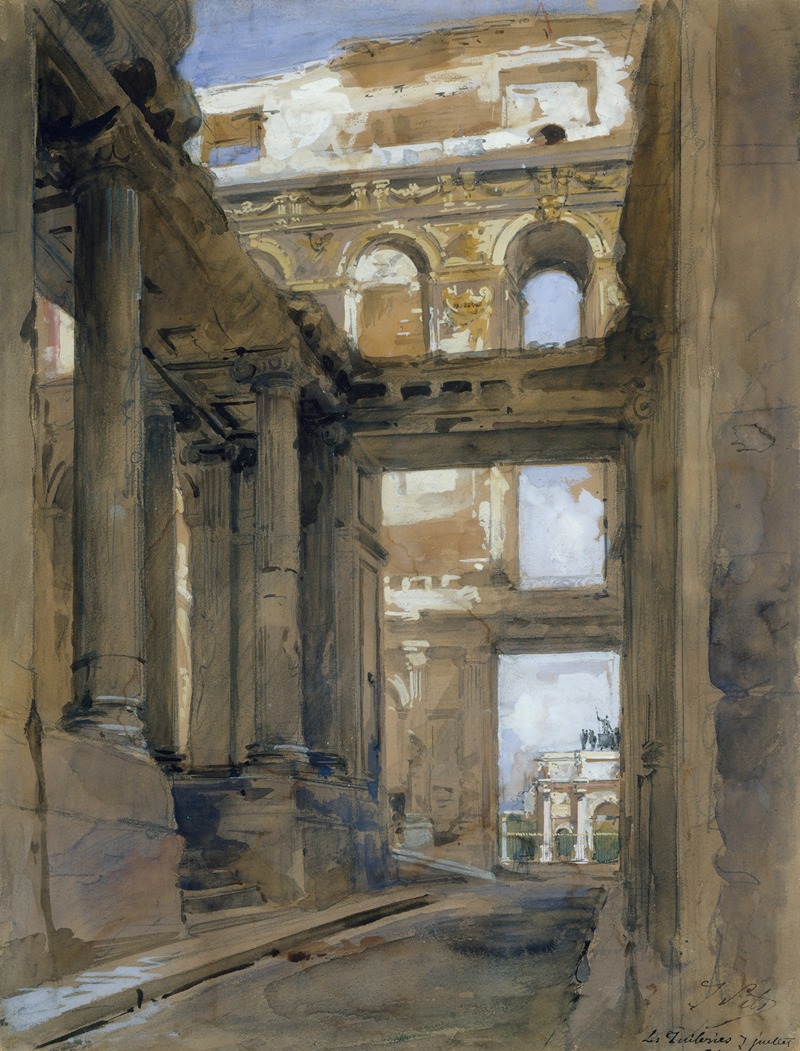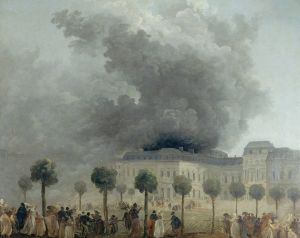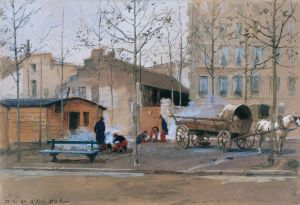
Ruins of the Tuileries Palace
A hand-painted replica of Isidore Pils’s masterpiece Ruins of the Tuileries Palace, meticulously crafted by professional artists to capture the true essence of the original. Each piece is created with museum-quality canvas and rare mineral pigments, carefully painted by experienced artists with delicate brushstrokes and rich, layered colors to perfectly recreate the texture of the original artwork. Unlike machine-printed reproductions, this hand-painted version brings the painting to life, infused with the artist’s emotions and skill in every stroke. Whether for personal collection or home decoration, it instantly elevates the artistic atmosphere of any space.
Isidore Pils' painting "Ruins of the Tuileries Palace" captures a significant moment in French history, reflecting the aftermath of the Paris Commune and the destruction of a notable architectural landmark. The Tuileries Palace, originally constructed in the 16th century, was an important royal and imperial residence in Paris, located on the right bank of the River Seine, adjacent to the Louvre. Over the centuries, it served as a home to various French monarchs and emperors, including Louis XIV, Napoleon Bonaparte, and Napoleon III.
The palace met its demise during the turbulent period of the Paris Commune in 1871. The Commune was a radical socialist and revolutionary government that briefly ruled Paris from March 18 to May 28, 1871. In the final days of the Commune, as government forces moved to retake the city, the Communards set fire to several significant buildings, including the Tuileries Palace, in an act of defiance and to prevent them from being used by the advancing troops.
Isidore Pils, a French academic painter known for his historical and genre scenes, documented the aftermath of this destruction in his painting. Pils was born in 1813 and studied at the École des Beaux-Arts in Paris, where he was a student of François-Édouard Picot. Throughout his career, Pils gained recognition for his works that often depicted military and historical subjects, aligning with the academic style of the time.
"Ruins of the Tuileries Palace" is a poignant representation of the devastation left by the fires. The painting captures the charred remains of the once-grand structure, highlighting the extensive damage and the loss of a significant piece of French heritage. The ruins stand as a testament to the political and social upheaval of the era, symbolizing both the end of an imperial era and the intense conflicts that characterized 19th-century France.
Pils' work is noted for its attention to detail and its ability to convey the somber mood of the scene. The painting serves not only as a historical record but also as a reflection on the impermanence of power and the vulnerability of cultural monuments in times of conflict. The ruins of the Tuileries remained in place for over a decade before being demolished in 1883, making way for the expansion of the Tuileries Garden.
Today, the painting is appreciated for its historical significance and artistic merit, offering viewers a glimpse into a pivotal moment in French history. It stands as a reminder of the complex interplay between art, history, and politics, and the role of artists like Isidore Pils in documenting and interpreting the events of their time.


















